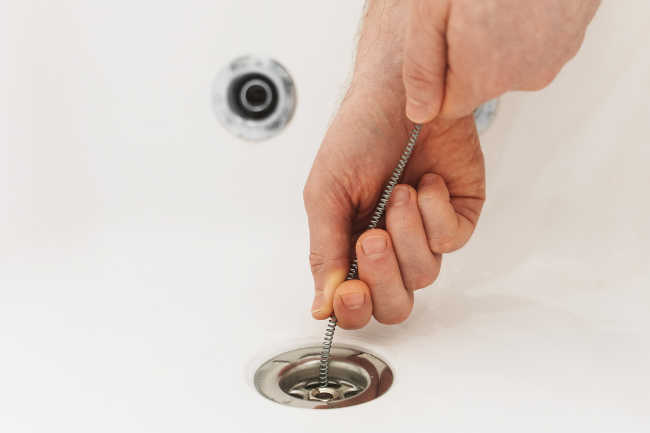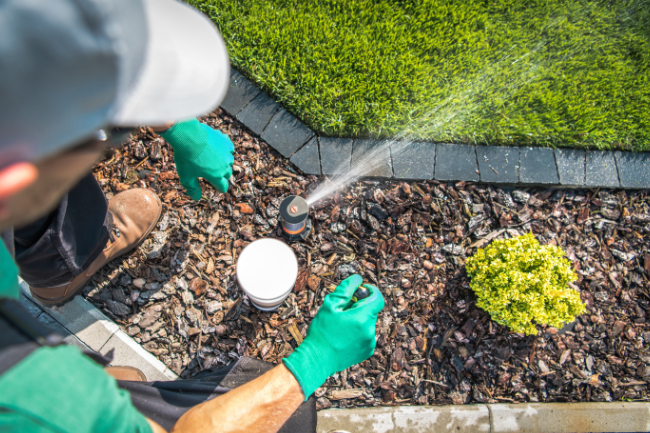Plumbing Tips: Snaking Your Own Drain
Posted by William Heinselman on
 It's a scenario we all live through sooner or later: the toilet/sink/tub is backed up and failing to drain water like it should. For many homeowners this is a common occurrence. Odds are, you have in your home a number of both chemical products and physical tools designed for the express purpose of clearing a clog quickly and efficiently. The question is, which tool is the most effective one for the job?
It's a scenario we all live through sooner or later: the toilet/sink/tub is backed up and failing to drain water like it should. For many homeowners this is a common occurrence. Odds are, you have in your home a number of both chemical products and physical tools designed for the express purpose of clearing a clog quickly and efficiently. The question is, which tool is the most effective one for the job?
- Plungers- The must-have plumbing tool for the home. Almost no matter where you go, whether you are in a run-down gas station in the middle of the desert, or a top-of-the-line five star resort hotel, you can find a plunger somewhere in the building. Globalsources.com lists over 200 different manufacturers and suppliers for plungers. As such, it is apparent that plungers are not going away anytime soon. For many clogged drains, a plunger is more than enough to get the job done. One of the most common usages is for the toilet, and the pressure generated by the plunger is usually enough to clear a soft clog from excessive tissue paper and clear the pipe. More solid blockages, however, can prove to be too much for a plunger alone.
- Chemical Products- There are many different brands and types of these products available on the shelves of your local stores, but they all operate on the same basic principal: you pour it down the sink, and it eats away at the material causing the clog. There are a couple of problems with these products. First, they can sometimes fail to adhere to the clog itself, causing them to flow through it instead of dissolving it. Second, they are not always safe for the pipe materials in your home and can corrode the pipes, causing a leak of waste water into your home.
Because of this, many apartment complexes have provisions prohibiting the use of such products in their lease agreements. Ignoring these lease agreements and using the product anyways can cost you, depending on the stipulations of your lease. Besides, these products are often laden with caustic chemicals that can dissolve skin on contact, creating a severe health hazard (for example, a study by the University of Vermont reports that Drano products contain 1-5% lye in household strength formulas, while industrial strength formula is 30-40% lye). The highly caustic and toxic nature of many of these chemical products makes them hazardous to the health of small children in the home.
The Third Option
A third product for dealing with clogged drains, and one that is becoming more and more popular, is the use of drain snakes, or augers, if you want to be technical. The drain snake works on a relatively simple principal: it goes into the clog, and is then spun around to grab the blockage and remove it by either breaking it up or allowing you to pull it out. As reported by how-to sites such as the "For Dummies" website, the process works like this:
- Remove any plugs or screens in the target drain. The drain snake cannot work if there is a drain plug or screen in the way, so remove these obstacles from the drain first. If you are accessing a sink from underneath, you may have already gotten past such obstacles.
- Push the end of the snake into the drain and begin cranking the handle clockwise. This will begin the process of unwinding the snake from its container and send it down the drain. Be sure to position the snake correctly, or else it may just unwind incorrectly and end up just spinning around the base of the toilet bowl/sink/tub. Wikihow's tutorial on using a drain snake recommends that you "move your grip down until it's about 3 inches from the drain opening. This close grip allows you to control your motions and feel for the clog easier."
- Keep pushing the snake until you feel resistance. If you are inserting the snake into the top of a sink or into a toilet, the first moment of resistance might be caused by the snake hitting the wall of the pipe's first bend, so keep going after that. If the snake begins moving smoothly again after only a second or two of resistance, it was probably just hitting the S-bend or equivalent. After this, the next bit of resistance you meet should be the clog itself.
- Rotate the snake against the blockage. Keep going until you can feel the snake feed freely through the pipe once more. In the case of solid clogs, the end of the snake may grab the offending object, and you might just pull the clog out with the snake.
- Remove the snake from the drain. Go slowly and carefully so as to avoid "dropping" the clog back into the line. Once the clog has been pulled out of the drain, dispose of it into a trash can.
- Reassemble your drain's major components. If you had to access the pipe from underneath the sink or other non-drain access point, reattach the pipe components for your sink's U-bend.
- Check the drain for proper water flow. For sinks and bathtubs, turn on the faucet and see if it drains properly. For a toilet, check the flush. If the drain does not have an attached faucet, slowly pour a bucket of water down the drain. It may take a few seconds for the water to wash away the remnants of the clog.
Preventing Future Clogs
After following the above steps for using a drain snake, you should now have a clear pipe once again. To prevent future clogs, you should:
- Avoid dumping solid objects down the drain. Whether its hair, bar soap, or leftover DIY plaster powder, you should avoid putting solid objects, or materials that can solidify, down the drain. This also applies to cooking grease, which should be placed in disposable containers.
- Maintain your garbage disposal. Keep cold water running at any time you are operating your disposal, to lubricate it, prevent overheating, and flush waste through the line.
- Use a mesh drain cover for sinks and for bathtubs/showers. Doing so goes a long way towards keeping your sink clear of obstructions by keeping soap chunks, hair, and other objects from going down the drain in the first place.
If you would like any more advice about how to clear a clogged line, or your drain snake just is not enough, contact your Sacramento sewer & drain experts for more advice, or learn how hydro-jetting can help you clear even the most stubborn clogs.
Topics: Home Plumbing, Drain Cleaning and Repair







